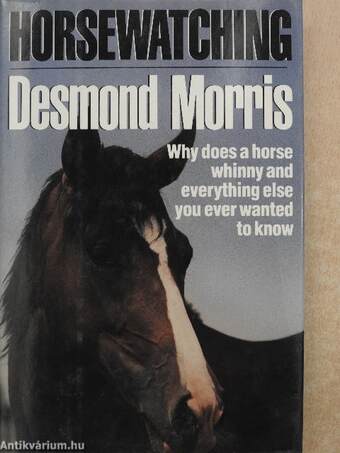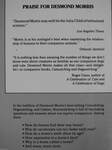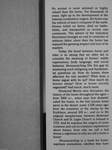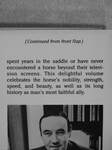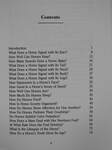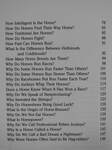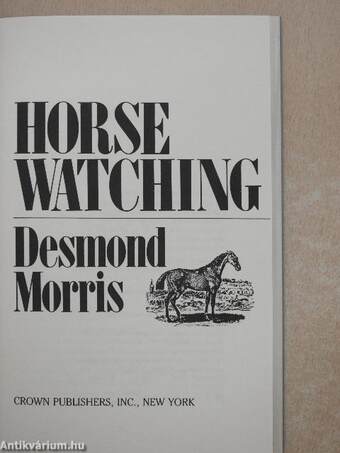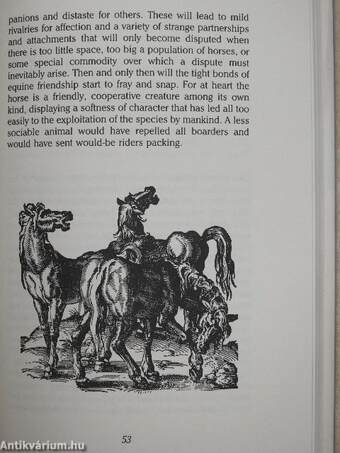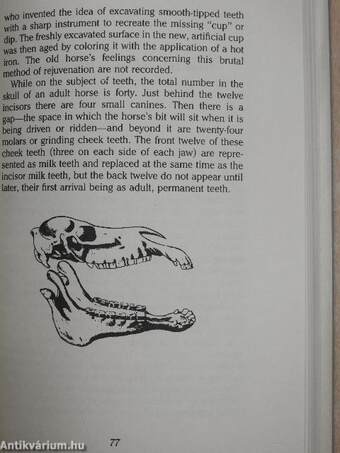1.066.620
kiadvánnyal nyújtjuk Magyarország legnagyobb antikvár könyv-kínálatát

VISSZA
A TETEJÉRE
JAVASLATOKÉszre-
vételek
Horse Watching
Why does a horse whinny and everything else you ever wanted to know
| Kiadó: | Crown Publishers, Inc. |
|---|---|
| Kiadás helye: | New York |
| Kiadás éve: | |
| Kötés típusa: | Félvászon |
| Oldalszám: | 150 oldal |
| Sorozatcím: | |
| Kötetszám: | |
| Nyelv: | Angol |
| Méret: | 22 cm x 15 cm |
| ISBN: | 0-517-57267-2 |
| Megjegyzés: | Fekete-fehér illusztrációkat tartalmaz. |
naponta értesítjük a beérkező friss
kiadványokról
naponta értesítjük a beérkező friss
kiadványokról
Előszó
TovábbFülszöveg
PRAISE FOR DESMOND MORRIS
"Desmond Morris may well be the Julia Child of behavioral science."
Los Angeles Times
"Morris is at his zoologist's best when examining the relationship of humans to their companion animals."
Orlando Sentinel
"It is nothing less than amazing the number of things we don't know even about creatures as familiar as our companion dogs and cats. Desmond Morris makes all that clear—and delightful—in companion books, Catwatching and Dogwatching."
Roger Caras, author of A Celebration of Cats and A Celebration of Dogs
In the tradition of Desmond Morris's best-selling Catwatching, Dogwatching, and Catlore, Horsewatching is full of fascinating questions and answers about our equine companions. Among them:
• How do horses find their way home?
• Why do racehorses not run faster each year?
• How do a horse's teeth show its age?
• How expressive is a horse's face?
• Why is a horse called a horse?
• And many, many more.
No animal is more admired or highly... Tovább
Fülszöveg
PRAISE FOR DESMOND MORRIS
"Desmond Morris may well be the Julia Child of behavioral science."
Los Angeles Times
"Morris is at his zoologist's best when examining the relationship of humans to their companion animals."
Orlando Sentinel
"It is nothing less than amazing the number of things we don't know even about creatures as familiar as our companion dogs and cats. Desmond Morris makes all that clear—and delightful—in companion books, Catwatching and Dogwatching."
Roger Caras, author of A Celebration of Cats and A Celebration of Dogs
In the tradition of Desmond Morris's best-selling Catwatching, Dogwatching, and Catlore, Horsewatching is full of fascinating questions and answers about our equine companions. Among them:
• How do horses find their way home?
• Why do racehorses not run faster each year?
• How do a horse's teeth show its age?
• How expressive is a horse's face?
• Why is a horse called a horse?
• And many, many more.
No animal is more admired or highly valued than the horse. For thousands of years, right up to the development of the internal combustion engine, the horse was the vehicle of man's conquest of the earth. Horses toiled on farms, died on battlefields, and transported us across vast continents. The advent of the Industrial Revolution brought an end to centuries of arduous labor; since then the horse has enjoyed the growing respect and love of its masters.
Today, the bond between horse and rider is so strong that we often fail to consider the meaning of horses' subtle expressions, body language, and social behavior. Horsewatching fills this gap by answering such intriguing and fundamental questions as: How do horses show affection for one another? What does a horse signal with its tail? How much do horses sleep? How is horse society organized? And much, much more.
Desmond Morris also discusses the history of the horse throughout the ages— from 3000 b.c, when man first domesticated the horse, to the first known horse races in the desert, some 3,338 years ago; from the invention of the stirrup by the Scythians, around 200 b.c., and on to the original steeplechase between Buttevant Church and St. Leger Church in Ireland in 1752. And he explains the origins of some common and not-so-common expressions about horses, from why we call a bad dream a nightmare to why we call a horse a horse!
Horsewatching is a book for horse-watchers everywhere, whether they have
(Continued from front flap)
spent years in the saddle or have never encountered a horse beyond their television screens. This delightful volume celebrates the horse's nobility, strength, speed, and beauty, as well as its long history as man's most faithful ally.
Vissza
Témakörök
- Természettudomány > Állatvilág > Lovak
- Idegennyelv > Idegennyelvű könyvek > Angol > Természettudományok > Egyéb
- Hobbi > Állatok > Ló
- Idegennyelv > Idegennyelvű könyvek > Angol > Hobbi > Egyéb
Desmond Morris
Desmond Morris műveinek az Antikvarium.hu-n kapható vagy előjegyezhető listáját itt tekintheti meg: Desmond Morris könyvek, művekMegvásárolható példányok
Nincs megvásárolható példány
A könyv összes megrendelhető példánya elfogyott. Ha kívánja, előjegyezheti a könyvet, és amint a könyv egy újabb példánya elérhető lesz, értesítjük.



